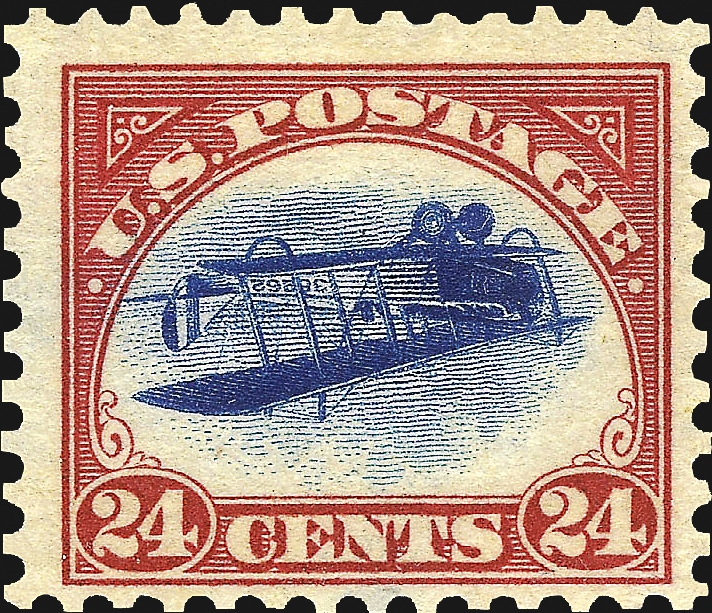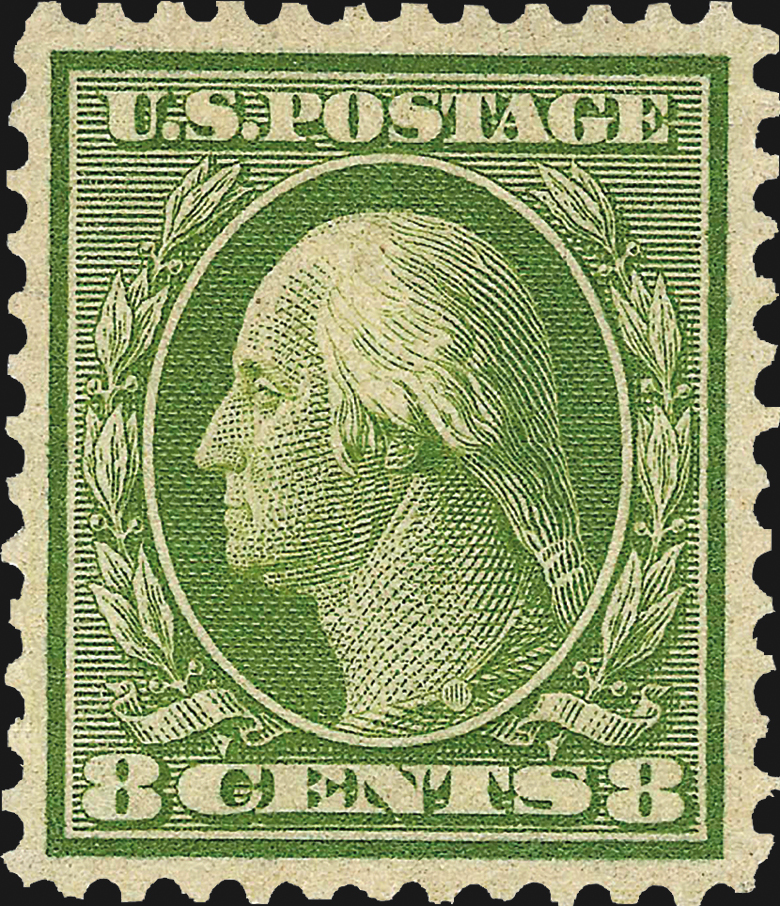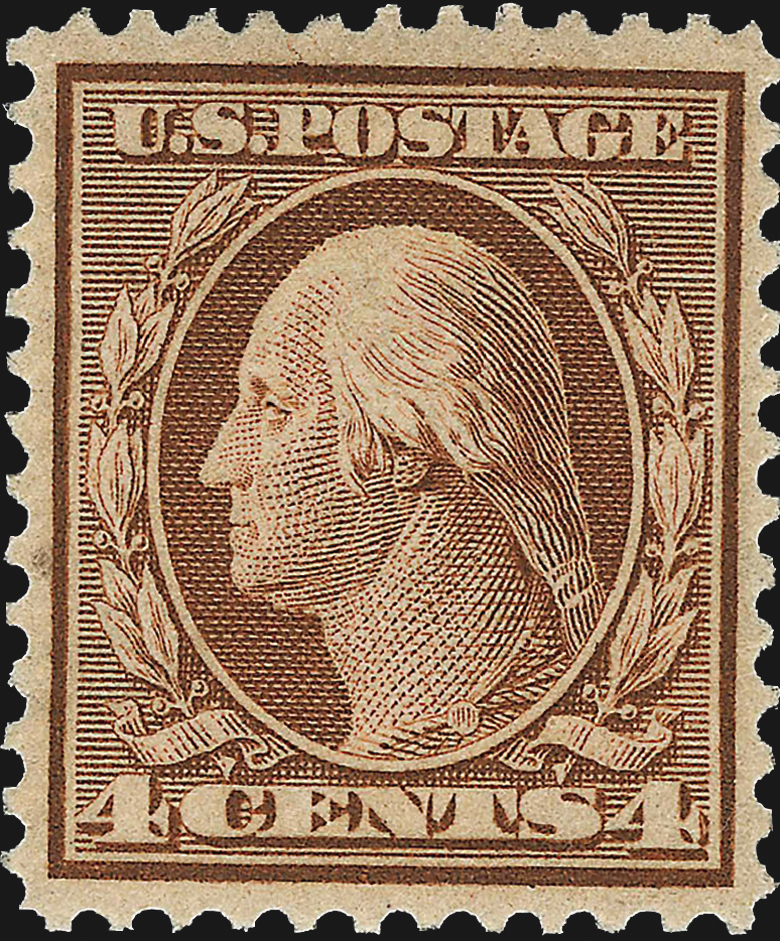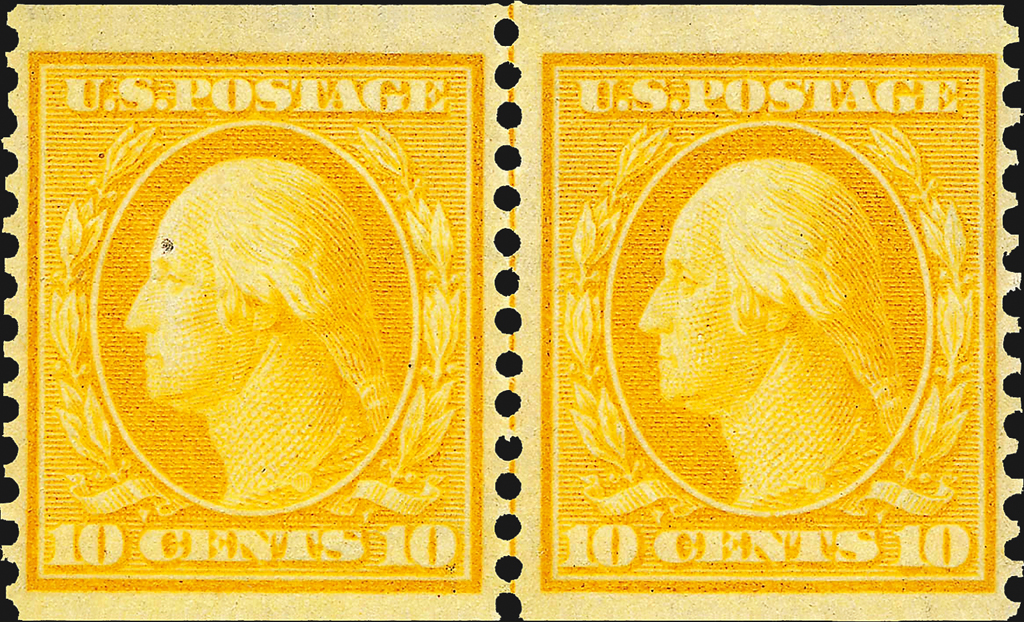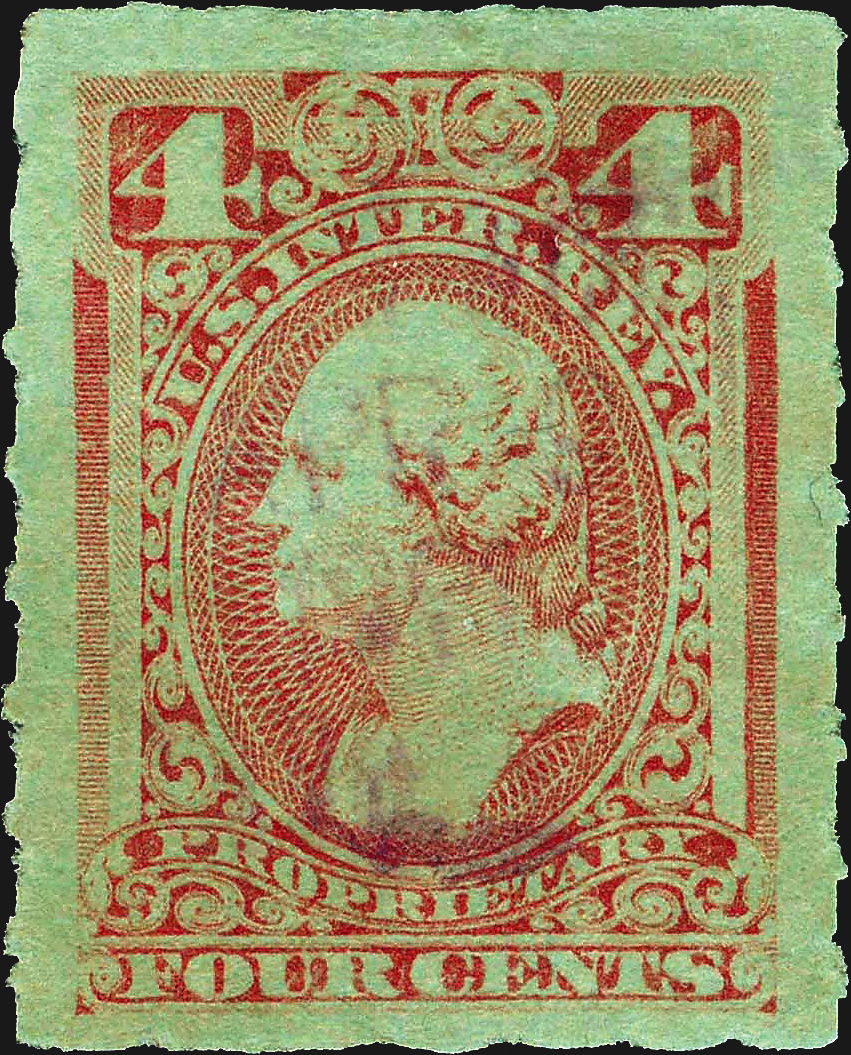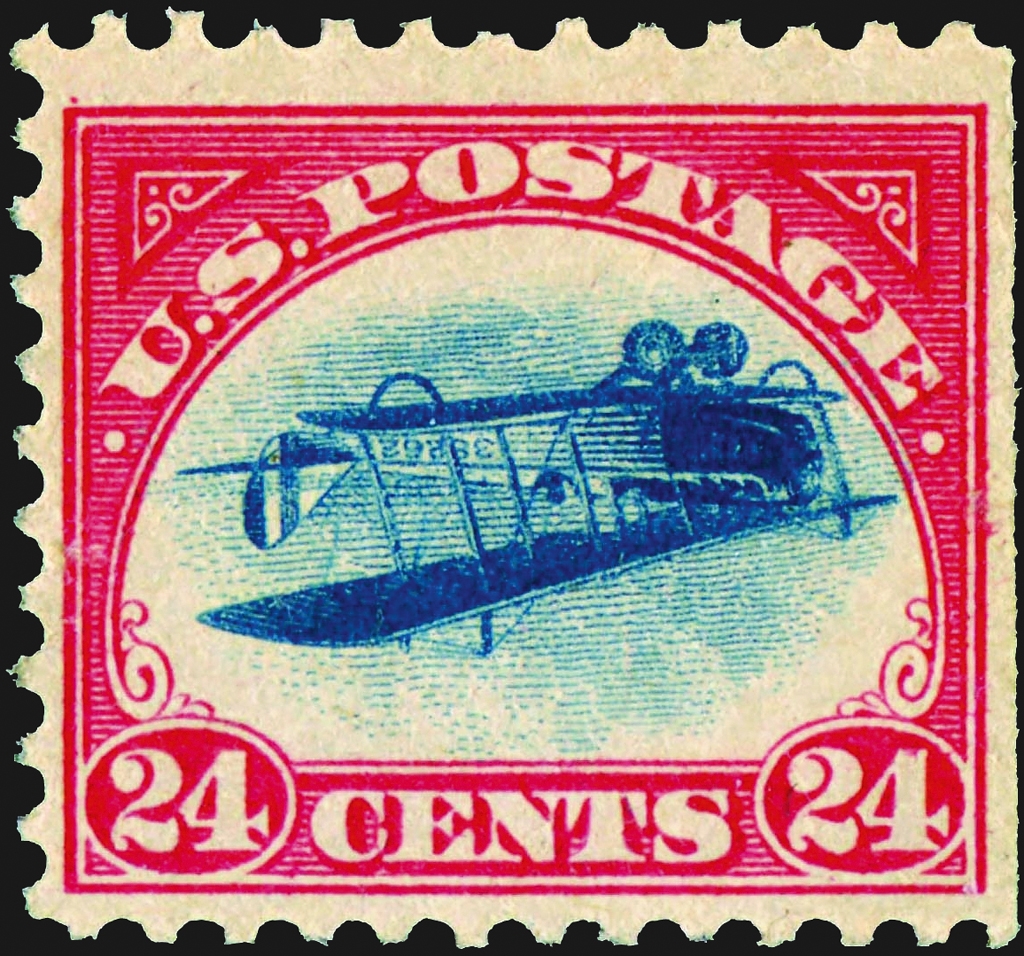Auctions
Two Inverted Jennies hammered down in separate auctions in February
Two Inverted Jennies changed hands at auction in late February, in sales on opposite sides of the country. One was offered by the firm of Michael E. Aldrich at the Aripex stamp show in Mesa, Ariz., on Feb. 21, while the other was sold as part of the Curtis collection of United States 20th Century and airmail stamps offered by Robert A. Siegel Auction Galleries in New York on Feb. 23-24.
All 100 examples of the classic U.S. 24¢ airmail stamp with the biplane in the center printed upside-down (Scott C3a), discovered in 1918 by a lucky postal customer named William T. Robey, are numbered on the back in pencil, from left to right starting on the top row. This was done by the famous dealer, Eugene Klein, when the stamps’ second owner, the eccentric collector and self-styled colonel, Edward H.R. Green, decided to have the sheet broken up for sale. Green retained a few singles and blocks.
Klein’s foresight in numbering each Inverted Jenny has been of enormous help to collectors in the 97 years since, allowing the stamps to be easily tracked and compared. Some of the hundred were printed off-center to start with, or had an undesirable straight edge. Others have been rudely mistreated, while a few were lost altogether. But every one of them can be readily identified by its original position in the 10-by-10 sheet.
The census has written itself. The example in the recent Aldrich sale was position 80, the last stamp in the third row from the bottom. As such, it has a straight edge at right, a perfectly normal occurrence on stamps of the era. In fact, 19 Inverted Jennies – nearly one in five – were produced with a straight edge on one or two sides.
Collectors who like their stamps raggedy all around, however, expect these hapless crewcut examples to trade at a discount (a couple of the straight-edged examples have had fraudulent perforations added over the years, in a largely vain attempt to boost the stamp’s appeal and value).
At some point in its life, the stamp from position 80 also lost its gum. Legend has it that Col. Green let moisture affect some of the inverts he retained, so that they stuck together and had to be soaked apart.
Position 80 has a somewhat shorter provenance than some of the other Inverted Jennies. The stamp was sold as part of Green’s estate in 1943 by Harmer, Rooke & Co. It was next offered by Robert A. Siegel in 1970 and bought for $12,000 by Irwin Weinberg – the same year Weinberg bought the famous British Guiana 1¢ magenta. Weinberg resold the invert the following year to Dr. Thomas W. Sale, in whose collection it remained for 43 years, until the Aldrich auction. It realized $132,250, including the 15 percent buyer’s premium that Aldrich adds to all lots.
Related posts from Linns.com:
- 24¢ Jenny Invert in Michael E. Aldrich auction at Aripex show
- Jenny Invert to be auction in Siegel sale of Curtis collection
- Jenny Invert 'locket copy' to auction May 15; Col. Green's gift to his wife has long history
Among several other inverts in the Aldrich sale was a used 30¢ Shield, Eagle and Flags stamp from the 1869 pictorial issue, with the ultramarine color of the flags upside-down (Scott 121b). In the days before philatelic errors had entered the public consciousness the way the Inverted Jenny did, people evidently thought little of using such a stamp on their mail.
While only seven unused examples of the 30¢ 1869 invert have survived, some 40 are known postally used, and many of those have faults. The example in the Aldrich sale, described as having “exceptionally strong colors” and “four large and exceptionally well balanced margins” and apparently fault-free, brought $54,625.
A unique, recently discovered revenue stamp also appeared in the Aldrich sale. A 4¢ red brown proprietary stamp of the 1875-81 series surfaced a few years ago with rouletted edges, which are like a series of tiny cuts, rather than the traditional perforations consisting of small, round holes. Specialists had long surmised that such a stamp existed, but until this example turned up, none was actually known.
Authenticated by the Philatelic Foundation, the stamp is newly listed in the Scott Specialized Catalogue of United States Stamps and Covers as number RB14c. It sold for $21,850.
The second Inverted Jenny offered in February, sold by Siegel, was position 19, the next-to-last stamp in the second row of the original sheet. Though it has the plus of perforations on all four sides, it suffers from a couple of minute thin spots – “almost unworthy of mention” according to Siegel – and a light mark where a hinge was once removed. Its centering is better than that of most examples of Scott C3a, but the design is still a bit low and to the right in relation to the perfs.
The Jenny sold for $195,500, including the 15 percent buyer’s premium added by Siegel to all lots.
A guide line pair of the U.S. 1909 10¢ Washington coil stamp with vertical gauge 12 perforations (Scott 356) was described as “exceedingly rare” in mint, never-hinged condition.
Although 10,000 of the 10¢ coil were issued, few were saved, as most collectors at the time weren’t interested in coil stamps.
The Scott U.S. Specialized catalog notes that purported examples of this coil frequently are forgeries, either by adding fake perforations to imperforate stamps or by trimming the perfs off fully perforated ones.
Certified by the Philatelic Foundation, the pair in the Siegel auction, described as having “radiant” yellow color, sold for $27,600.
The Siegel sale included a run of U.S. Washington-Franklin stamps printed on experimental “bluish” paper. The color actually has a grayish hue, caused by the addition of 35 percent rag stock to the paper. Besides the 1¢ and 2¢ values, all the bluish-paper stamps are scarce, with the 4¢ and 8¢ being known only from about 80 unused examples of each that were traded out of Post Office archives for other rare stamps.
A 4¢ Washington on bluish paper (Scott 360) with exceptionally nice centering sold for $28,750. A never-hinged 5¢ (361) described as the best example known and a lightly hinged 8¢ (363), called “easily one of the finest,” each fetched $37,375 – both results exceeding their Scott catalog values.
More from Linns.com:
Bidding war drives 22¢ Prexie solo cover to $4,050 on eBay
Postal Service delays rate increase
Two examples of rare rotary press sheet waste stamps sold in separate auctions
Stamp Market Tips: U.S. Bicycle local can be a good buy
Keep up with all of Linns.com's news and insights by signing up for our free eNewsletters, liking us on Facebook, and following us on Twitter. We're also on Instagram!
MORE RELATED ARTICLES
Headlines
-
US Stamps
Oct 7, 2024, 3 PMMcMurtrie dismissed as APS education director following Sept. 21 arrest
-
US Stamps
Oct 7, 2024, 12 PMVasiliauskas named president of Mystic Stamp Co.
-
US Stamps
Oct 6, 2024, 5 PMApgar souvenir card available
-
US Stamps
Oct 6, 2024, 4 PMFirst Continental Congress and U.N. stamps receive Scott catalog numbers
